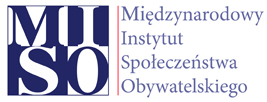Graphics as a Commentary on Reality
The following speakers attended the meeting: Kinga Offert (illustrator, author of posters, murals, animations), Lena Czerniawska (illustrator, writer, improviser), Natalia Lajszczak (graphic designer, spokeswoman of Graphic Emergency) and Jarek Kubicki (graphic designer, painter, photographer).The moderator of the debate was Marcin Hinz (cultural anthropologist, qualitative researcher).
At the beginning of the discussion, Marcin Hinz pointed out three reasons that led to an increase in artists' activity: the rule of the current government, the traumatic experiences of pandemonium and isolation, and strikes in defense of women's rights. In his opinion, those events needed artistic, graphic and audiovisual commentary.
Regarding this hypothesis, Natalia Łajszczak told the story of the founding of Graphic Emergency, which became a platform for supporting social action. - Commenting on reality through visual action is not a new thought, but rather a continuum, especially in Poland. Our visual history is actually filled with posters that comment on sociopolitical reality - she said. She also mentioned a feminist saying originated from the 1960s - "Private is political!", meaning everything private is political and everything political is private. And this is what has happened in our country as well. The law that tightens the abortion law encroaches on our privacy, similarly as the covid restrictions do - Natalia Łajszczak said.
In a similar vein, Jarek Kubicki commented. According to him, graphics for artists is a natural way to express emotions. Therefore, in moments of political turmoil, it is even natural to intensify artistic.
Also for Kinga Offert, graphics are a natural motif that one uses to express one's opinions. - Graphics are ubiquitous on the Internet and on the streets. I just wonder what else can be said or what needs to happen to make it more visible, more powerful, and the message clear and obvious to people," Offert said.
In turn, Lena Czerniawska said that she usually put herself in the position of an observer and researcher. - I try to touch modernity from a safe distance, while trying to understand certain aspects of it that are intriguing to me. Mainly the passing, in general, of time as an entity that we would like to possess, but also through various turbulences we would like to remove certain experiences. I run the Macondo Foundation, and this is my space for social activism, where I try to give voice to the people who make up the place, and open up possibilities for commenting on reality not only through graphics, but through other avenues - she said.
Lena mentioned that she had participated in a women's demonstration in Mexico on the occasion of March 8th. - It was the most frightening experience in terms of any demonstration I've been to in my life. Everything was divided into different artistic and social sequences. People were divided into small groups with their own graphic identification, colors, manifestos, installations. Many directors would be surprised at what creativity such emotions can unleash - Czerniawska said.
Street art, slogans on banners, or the demonstrations themselves can be called a kind of a gasoline bottle. - And so it was in Mexico. There, there were authentically broken windows, graffiti walls, the whole city changed. I recall seeing graffiti and damaged building facades. That graphic "gasoline bottle" somehow penetrated into reality, it was an expression of great anger - the speaker noted.
Jakub Kubicki, however, disagreed with the thesis that nothing artistic happened in times of relative political calm. - There is always some party that feels in the minority, oppressed or particularly affected by some event - he said.
Natalia Łajszczak added to the photographer's statement that in the times before the rule of Law and Justice there was certainly artwork commenting on reality. There was a division between artists who were more liberal, left-wing and those who were conservative. Any communal, patriotic slogans expressed through posters or graphics could also be counted as artistic activity commenting on reality.
According to Lena Czerniawska, after 1989 the streets were taken over by advertisements, that is, this other, new consumer reality. With regard to this, Marcin Hinz asked the question about the boundary between artistic expression and an Internet meme, or simply poor poster design? What is the criterion, how to judge it?
Natalia Łajszczak said that in her opinion it was better not to use the term "art", but visual expression, graphic expression, while referring to graphics. The term "art" was already passé in a sense, because it did not fully reflect the diversity and variability of creativity.
Lena Czerniawska added that the most important thing an artist could do was to be among the crowd, to experience momentous moments with them, to draw inspiration from the authentic experiences of the people who expressed them. - This must not base on the principle of competition and superiority, positioning the artist on a higher level because of his education. After all, this is our common cause - she noted.
According to Jarek Kubicki, the role of a professional artist at such events can also be limited to creating unifying symbolism, as was the case, for example, at the climate change demonstrations. He also stated that the language of the poster, however, was the language of struggle, not debate.


